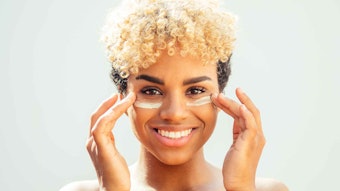There’s been a lot of talk lately about particle size, especially in reference to nano. On the consumer front, medical advances based on nano-sized tools regularly appear in the news. For instance, recent work from the University of Michigan* describes how the silk moth’s antenna improved a nanotechnology that could aid in understanding treatments for neurodegenerative diseases such as Alzheimer’s. A fluid lipid bilayer coating, similar to that found on the male silk moth’s antenna, was developed to trap and transport treatment molecules of interest through nanopores. This coating also reportedly allows researchers to adjust the size of the pore with close-to-atomic precision.
Being exposed through the media to such promising medical advances, intended for internal use, it’s no wonder why consumers fear that nanotechnology in cosmetic applications such as sunscreens could undesirably penetrate and absorb systemically, although research does not support this notion. On the personal care R&D front, nanoparticles are leveraged in sun care for product clarity on the skin and improved coverage. Also, nanoemulsions have been shown to improve the stability of formulations since, the smaller the particle size, generally the more stable the emulsion. When it comes to anti-aging, however, nano-size is in fact about the deeper penetration of actives—although only within the upper skin layers.
In this issue of Cosmetics & Toiletries magazine, Amnuaikit et al. take a close look at nanoemulsions and compare them with standard emulsions to assess the effects of each on the delivery of anti-aging actives coenzyme Q10 and tocopheryl acetate. Also relating to delivery, Mundschau et al. explore the implications of applying compositions to skin via nonwoven substrates and related formulating considerations. Besides skin care and delivery, this issue also tackles the concept of sulfate-free formulating in Coots’ article. In relation, Georgalas describes approaches to formulating naturals in hair care. Further, Abrutyn deciphers anti-frizz hair formulas in his column.
Like efficiently targeted actives, Cosmetics & Toiletries content is designed to deliver relevant information to you via many different-sized vehicles—from the printed magazine, digital edition and website, to the e-newsletter, CBR directory and new Cosmetic Chemist Training Program (visit www.CompleteCosmeticChemist.com to learn more). Our goal is to support you in formulating results in cosmetics R&D. How are we doing? Please tell us. (See Contact Us, below.)
* www.sify.com/news/nano-tool-inspired-by-silk-moth-antenna-could-aid-alzheimer-s-research-news-international-ldbqOlbagge.html (Accessed Mar 1, 2011)










